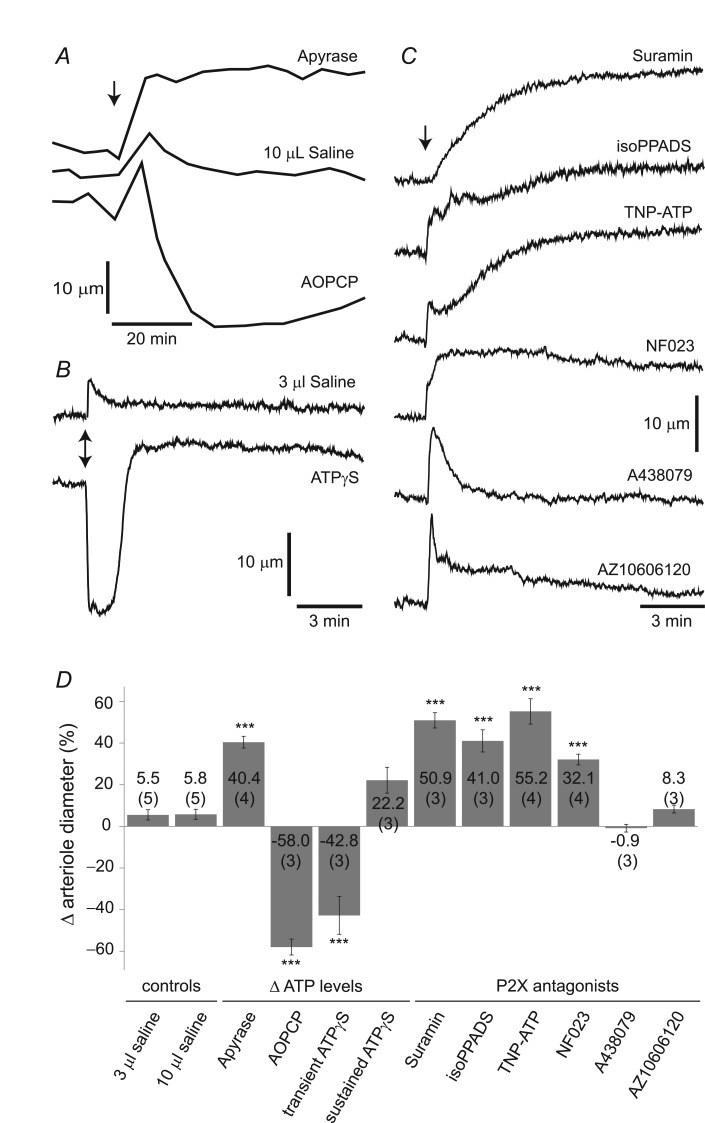Figure 2.
A, vitreal injection of apyrase (500 units ml−1), an ATP hydrolysing enzyme that reduces endogenous ATP levels, dilated vessels while AOPCP (12.5 mm), an ecto-5′-nucleotidase inhibitor which increases ATP levels, constricted vessels. B, injection of ATPγS (10 μm), a slowly hydrolysable ATP analogue, evoked a large transient vasoconstriction followed by a small, sustained vasodilatation. C, suramin (500 μm), a non-selective P2 receptor antagonist; isoPPADS (300 μm), a P2X receptor antagonist; TNP-ATP (50 μm), a P2X1, P2X3 and P2X2/3 receptor antagonist; and NF023 (50 μm), a P2X1 receptor antagonist, all evoked dilatations of retinal arterioles. A438079 (500 μm) and AZ10606120 (50 μm), P2X7 receptor antagonists, had no effect on arteriole diameter. Vehicle injections (3 μl and 10 μl saline) evoked small, transient vasodilatations. Saline injection volumes in A and B matched the volumes of injected drugs in the respective trials. Traces in A differ in appearance from B and C due to different rates of data collection. Arrows indicate time of vitreal injections. D, summary of in vivo data showing arteriole diameter changes evoked by altered ATP levels and by vitreal injection of P2X receptor antagonists. Vessel diameters were measured after they reached plateau values. Numbers in parentheses indicate number of rats; error bars denote ± s.e.m.; ***P < 0.001 relative to vehicle control. A430879, 3-[[5-(2,3-dichlorophenyl)-1H-tetrazol-1-yl]methyl]pyridine; AOPCP, α,β-methylene ADP; AZ10606120, N-[2-[[2-[(2-hydroxyethyl)amino]ethyl]amino]-5-quinolinyl]-2-tricyclo[3.3.1.13,7]dec-1-ylacetamide dihydrochloride; isoPPADS, pyridoxalphosphate-6-azophenyl-2′,5′disulphonic acid; NF023, 8,8′-[carbonylbis(imino-3,1-phenylenecarbonylimino)]bis-1,3,5-naphthalene-trisulphonic; TNP-ATP, 2′,3′-O-(2,4,6-trinitrophenyl)-ATP.

